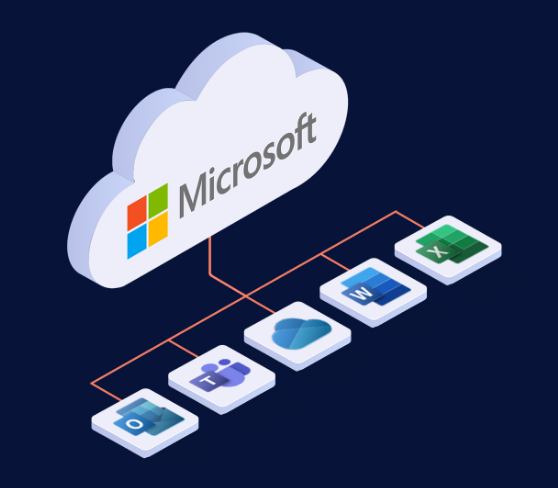As a business executive, you'll find a multitude of security solutions at your fingertips to help...
Protecting Your Data with the Right Backup Strategy
Your company data is the lifeblood of your business. Every day, businesses gather and process massive amounts of data from their customers, and this data is essential for their daily operations. Losing data for any reason can have devastating consequences for business organizations. Also, your data may be "in the cloud", but that doesn't mean it's being backed up.
This is the harsh reality of today’s digital business landscape. Data loss can occur in many ways, from natural disasters to cyberattacks. If you face an unexpected data loss, your competitive edge depends on how fast you can resume your operations without significant downtime.
In this article, we’ll briefly explore the various risks to business data and how you can prevent them with the right backup strategy. We’ll also examine the different methods of backing up data and the benefits of using a reliable business continuity and disaster recovery (BCDR) solution.
 IT PROTECT includes Cloud Backup for Microsoft 365 and Google Workspace. Business Continuity & Disaster Recovery is tailored exclusively for onsite and cloud services like Microsoft 365 & Google Workspace. IT PROTECT presents a robust shield of data protection and recovery capabilities, meticulously crafted to fortify businesses making them resilient to cyber threats. Learn more at https://cloudmatrixit.com/managed-it-solutions
IT PROTECT includes Cloud Backup for Microsoft 365 and Google Workspace. Business Continuity & Disaster Recovery is tailored exclusively for onsite and cloud services like Microsoft 365 & Google Workspace. IT PROTECT presents a robust shield of data protection and recovery capabilities, meticulously crafted to fortify businesses making them resilient to cyber threats. Learn more at https://cloudmatrixit.com/managed-it-solutions
Why Do You Need Data Backup?
Before we look at the different methods of backing up data, you need to know why your business needs a data backup solution. Businesses often face the following data security threats in their daily operations.
Cyberattacks: As technology advances, cyberattacks become more sophisticated. The rising threat of ransomware is a proof of that. According to the latest Verizon report, 27% of malware incidents are caused by ransomware attacks. While antimalware and antivirus programs can provide some protection, businesses need to consider what might happen if they suffer an inevitable security breach and data loss when designing a data security strategy.
Natural disasters: Natural disasters such as floods, fire, earthquakes and the like are a major hazard to the conventional form of data storage and security. Do you have the resources to recover if these disasters strike unexpectedly and destroy your company’s data?
Hardware issues: Hardware issues are a common source of business data loss. With traditional data storage methods, data is stored in a physical location on hard drives and backup appliances. Any hardware issues that affect these devices can jeopardize your valuable data.
Human errors: Human errors are still a significant factor in data loss. According to Verizon, up to 30 percent of data loss incidents are due to internal actors. This could be anything from weak password practices to falling for phishing scams.
All these factors show that data loss can happen to any organization regardless of their size or the security measures they take. What you need is a robust data backup solution to ensure that your lost data is not irretrievable.
Data Backup Methods
As you realize the significance of data backup, you may wonder – What is the optimal way to store data? How many backups should you have?
To answer these questions, you need to consider both cloud backup and on-site backup appliances. Both have their pros and cons. On-storage devices are quicker, giving organizations full authority over their data. However, they are susceptible to physical accidents and hardware problems. Cloud-based backup, on the other hand, is immune to natural disasters but needs a lot of bandwidth to backup large files.
The best backup strategy is one that blends both these methods, with multiple backups stored in different places. When you backup your data, you need to follow the 3-2-1 rule, which addresses your questions on what the best way to backup data is and how many backups you need.
According to this rule, it is wise to have at least three backups of data – one working copy and two backup copies on two different media (internal hard drive and removable storage media) along with one off-site copy (cloud) for disaster recovery. Newer versions of this rule recommend having at least two copies (3-2-2 rule) on the cloud depending on the value of your data. Ultimately, the more backups you have, the higher your chances of recovery after a loss.
Benefits of BCDR Over File-Only Backups
In simple terms, data backup is just the process of making copies of your files and storing them. However, the main goal of a backup is to get your business back on track as soon as possible after an unexpected disaster. Therefore, an efficient backup strategy is linked with business continuity as well. Business continuity refers to the ability of your organization to resume normal operations as quickly as possible after an unexpected data loss.
When you think about business continuity, you must think in terms of Recovery Time Objective (RTO) and Recovery Point Objective (RPO). RTO refers to the maximum time an application can be offline without affecting the business. RPO refers to the maximum amount of data that can be lost without damaging the business.
A good BCDR solution will offer you the following advantages:
• Significant reduction in RTO and RPO
• Ability to estimate business recovery after an unexpected disaster
• Reduction in downtime and related revenue losses
• Lower disruption to vital business processes
• Avoid damage to business reputation
• Ability to tailor disaster recovery as per your requirements
Data Backup Guidelines
When you adopt an effective backup strategy, follow these guidelines to minimize data loss:
Back up more often: Digital businesses need to back up their data several times a day. Doing it once a day, at the end of work hours, is not enough, especially with the number of risks targeting your data.
Use cloud backup: The Cloud has become an essential part of data backup in this digital era. Cloud backup offers many advantages such as easy recovery, easy scalability, better cost efficiency and more.
Use the power of automation: Automation has become a game changer for various IT tasks and backup is no exception. When you automate your disaster recovery process, you can recover from serious disasters and resume business operations without losing too much time.
Determine your retention period: Keeping all data backup versions forever is not a practical solution for most small businesses. Therefore, you need to decide how long you will keep your data. This requirement will depend on your industry, needs and compliance regulations. You need to find a solution that meets all criteria.
A well thought out backup plan should be a part of every organization’s business strategy, regardless of its size, location or industry. Threats to business data are very real and are occurring at a high rate. In this situation, a solid data backup plan could be the protective measure that saves your business when disaster strikes.
If you have not developed a BCDR plan to protect your company data, now's the time. Reach out for a chat. We can help.
Cloud Matrix IT™ is a managed IT and technology consulting firm who specializes in providing proactive IT solutions to small and medium-sized businesses. We designed IT PROTECT specifically for the SMB. IT PROTECT is a comprehensive suite of solutions & processes that help your business save time, reduce costs, provide your staff IT support, and help you stay protected with our fully managed 24/7/365 SOC PLUS cybersecurity platform. Yes, even weekends and holidays.



